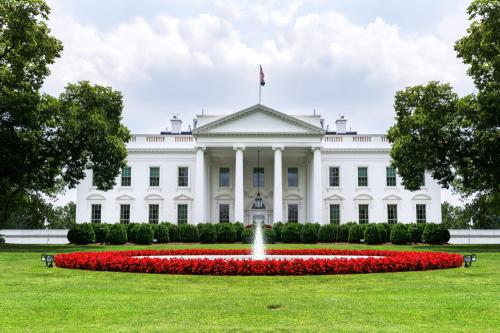On his first day in office, President Biden issued a memorandum titled “Modernizing Regulatory Review,” which made it clear that his administration would be charting a new course in regulatory policymaking. Gone was the Trump administration’s focus on the overall numbers or costs of rules. In its place, President Biden hinted that his administration would encourage agencies to adopt new rules in areas in which the existing ones may be insufficient, even as he sought to roll back rules relating to immigration, architectural requirements, and other matters. And he urged agencies to focus closely on how regulatory policy might hurt certain vulnerable groups and to ensure those groups have a say in how agency rules are made.
As the administration’s initiative is taking shape, a major group that can often suffer harm as a result of regulatory initiatives is the small business community. Conservatives have, on the whole, been quite attentive to this problem, and they should see Biden’s new initiative as a major opportunity to shine a light on the issue and help the administration develop constructive solutions. Progressives, too, should welcome these efforts: small businesses create many new jobs, including for low- and middle-wage workers, and ensuring that these businesses flourish is critical to combating income inequality.
Regulations and small businesses’ bottom line
Regulatory policy can be critical to whether small businesses survive or go under. To understand how, consider the challenges facing a small construction firm. Several agencies (the Occupational Safety and Health Administration (OSHA), Environmental Protection Agency (EPA), Department of Labor (DOL), etc.) have issued an array of rules that affect the business. To make sure the firm does not violate these rules, the owner herself often has to parse dense regulatory text, an exercise that can be time-consuming, frustrating, and confusing. Alternatively, the owner may need to hire an attorney or outside compliance expert, which can be expensive. The firm’s much larger competitors have to comply with the same rules (and maybe even some additional rules, since small businesses are sometimes exempt), but their revenues are so much higher that they can more easily pay an expert to figure it out. Since compliance costs are often fixed regardless of firm size, the small firm may end up spending a much higher portion of its budget than will the large firm.
And that understates the scope of the problem. In many industries, large firms are usually competing for a handful of big-ticket jobs, and the businesses that hire them have few other options. That gives them what economists would call “market power,” which means they can raise their prices without losing too much business. They can easily charge their largest customers a little more in overhead expenses to cover the cost of their compliance fees. Small firms, by contrast, are often competing for less lucrative transactions, and their customers are likely to notice and take their business elsewhere if they try to charge a premium to cover compliance costs.
This is a problem not only for small businesses themselves but also for broader society. The disproportionately high compliance costs faced by small businesses can put them at a competitive disadvantage to their larger competitors. Over time, this could have the effect of increasing market concentration in heavily regulated industries, driving out smaller competitors and reducing the number of market participants. One recent study, which examined the causes and consequences of market concentration, supports this insight, finding that increased regulatory stringency correlates with reduced firm entry over the past four decades. Another study showed that, in the case of Food and Drug Administration (FDA) regulations governing pharmaceutical companies, smaller competitors were placed at a competitive disadvantage and were forced to reduce their research and development expenditures, leading to a reduction in innovation.
Accounting for regulations’ effect on market concentration
Any increase in market concentration caused by regulatory intervention brings about a variety of societal ills, including increased income inequality. Recent studies have shown that, although increased market concentration does not necessarily increase consumer prices since efficiency gains may offset the potential price increases caused by lost competition, it does exacerbate income inequality by transferring wealth from workers to shareholders. Since corporate managers are judged chiefly on their ability to increase the share price of the company’s stock, they will be motivated to pass along the benefits of any efficiency gains to shareholders rather than employees.
Unfortunately, the extent to which regulatory intervention might increase market concentration is largely unknown. As a result, agencies’ regulatory impact analyses, in which they add up the costs and benefits of a proposed intervention, do not account for the potential costs of decreased competition. Much as some scholars have argued that federal regulatory policy is biased against strong regulation insofar as certain types of benefits (especially environmental benefits) are undervalued, one could argue that regulatory policy is also biased in favor of strong regulation insofar as it overlooks the costs of increased market concentration.
Proposals to improve regulations in the Biden era
President Biden’s Modernizing Regulatory Review initiative offers an excellent opportunity to focus on this problem. One possible solution to reducing the regulatory burden for small businesses might involve reducing the overall number and cost of regulations. This is the route the Trump administration took with its requirement that agencies offset the costs of new regulations with equivalent regulatory savings and eliminate two rules for every new one adopted. That may or may not be a wise approach, but it appears to be a non-starter in the Biden administration. Alternative ways to address the problem dovetail perfectly with the types of initiatives the administration has already said it would like to pursue. Here are a few ideas.
Increase outreach to the small business community in the agency rulemaking process. No one knows better than small businesses exactly how regulations might affect them. Yet small businesses, as a whole, are often under-represented or play no role whatsoever in regulatory policymaking. There are already a handful of laws, most notably the Small Business Regulatory Enforcement Fairness Act (SBREFA) and Regulatory Flexibility Act (RFA), which require agencies to reach out to small businesses and to consider certain proposed rules’ effects on the small business community. In addition, the Small Business Administration’s Office of Advocacy often files comments in favor of small business interests. But the Office of Advocacy is very small (31 full-time employees), and SBREFA’s reach is fairly limited, applying to only a handful of rules at just three agencies (EPA, OSHA, and the Consumer Finance Protection Bureau (CFPB)). Agencies often ignore the RFA’s requirement to consider proposed rules’ effects on small business or conduct a very cursory analysis. In reality, almost all significant rules are likely to have some effect on small business interests, and hearing directly from small business owners could help agencies identify ways to minimize the regulatory burden.
This could involve reaching out directly to small business owners to encourage them to submit comments when a rule is being contemplated, holding hearings about concerns facing small businesses, or making agencies’ websites easier to navigate so that small business owners can both make their views known on future rules and more easily comply with existing rules. Although they are not targeted specifically to small businesses, the Administrative Conference of the United States (ACUS) has identified a wide array of such options for enhanced outreach in the rulemaking process. Modest reforms to streamline the interaction between small businesses and regulatory agencies would help ensure that the small business perspective is heard and that owners can more easily navigate the regulatory process.
Consider exemptions for businesses below a particular size. This reform would be more controversial, and it may be inappropriate for certain types of regulations for which uniform compliance is critical. For instance, given the health risks involved, exempting small businesses from food safety requirements would likely be ill-advised. By contrast, various federal reporting requirements might impose an especially large burden on small businesses, since they do not have a compliance department dedicated to discharging such requirements, while producing relatively minimal information of use to federal regulators. Given the especially large burden that regulations can pose on small businesses, an outright exemption might be an appropriate corrective measure in some cases. It is not uncommon for an agency to exempt businesses below a particular threshold for number of employees or annual revenues, and a more systematic process for deciding if such exemptions should be granted would be valuable.
At the very least, agencies should be mindful of the fact that large businesses are more capable of hiring expensive law firms and lobbying shops to request special regulatory exemptions. When an agency grants a waiver to a large firm, the agency should publicly announce its decision and strongly consider extending it to all firms so that smaller players are not at a competitive disadvantage. And in some cases, it may make sense to provide a special carve-out to small businesses when the effects of their activities are minimal or when they face an especially heavy burden.
Streamline regulatory overlap. Unlike agency officials, who are concerned almost exclusively with the regulations their employing agency issues, businesses are predominantly concerned with the cumulative burden of regulations issued by the entire government. As Progressive Policy Institute scholars Michael Mandel and Diana Carew argue, regulations can act like pebbles in a stream, causing few problems individually but creating an overwhelming burden in the aggregate. Though large corporations can call upon their in-house compliance departments to help navigate the clogged regulatory stream, small businesses have no such luxury.
In that light, agencies should be especially mindful of how their regulations will interact not only with those of sister agencies but also with regulations issued by foreign, state, tribal, or local governments. As agencies undertake retrospective review, they should look for ways to eliminate unnecessary duplication and coordinate their efforts with fellow regulators to produce a coherent regulatory scheme. Fortunately, advances in artificial intelligence are likely to make the task much easier. For instance, some agencies use the privately developed RegExplorer tool, which combs through the millions of pages in the Code of Federal Regulations and state and foreign codes to identify regulatory overlap. Agencies should also coordinate with fellow regulators to produce compliance guides that allow regulated firms to easily identify the rules that are applicable to them. By better laying out which regulations apply to which businesses, agencies can help provide the sort of relief for small businesses that the Modernizing Regulatory Review initiative contemplates.
Commission a team of economists to account for the costs of market concentration. As noted above, regulations often impose a disproportionate burden on small firms. It is therefore conceivable that an especially heavy or inflexible regulatory regime could tilt the playing field in favor of large businesses and increase market concentration. But the precise extent to which certain types of regulations might have this effect or the susceptibility of firms in different industries to this phenomenon is largely unknown.
To address this uncertainty, the Biden administration should consider convening a blue-ribbon commission of economists. The commission would draw upon both regulatory experts (including the wide array of talented economists already working in the Office of Information and Regulatory Affairs and other federal agencies) and experts in the field of competition policy to devise a methodology to account for (and ideally quantify) the potential anti-competitive effects of certain regulatory interventions. By considering these anti-competitive effects, agencies would better understand a major potential cost of regulation that has otherwise gone overlooked and ideally design more sophisticated interventions to account for this cost.
Building bipartisan support for these proposals
Certain aspects of the approaches described here might make policymakers on both sides of the aisle a little uncomfortable. Conservatives prefer a wholesale reduction in the number of regulations, as the Trump administration sought to accomplish, and targeted relief for small businesses may seem inadequate. Progressives tend to defend the regulatory state writ large given conservative efforts to roll back rules across the board, and they may be reluctant to concede that certain regulatory interventions harm small businesses or might increase market concentration.
But making real progress requires both sides to concede a little, and given that this area is not as polarizing as some other political issues, it may be one of the few areas in which bipartisan consensus is possible. Indeed, conservatives and progressives increasingly agree that state and local regulations like occupational licensing, zoning, and other market interventions freeze out market players, drive up costs, and hurt the poorest members of society, notwithstanding any benefits they may provide by mitigating information asymmetries or enhancing property values. Shining a similar light on regulations at the federal level may well reveal new ways to achieve a result progressives will love (lowering income inequality) using an approach that conservatives will applaud (reducing regulatory burdens). Whatever the prospects for a bipartisan resurgence in a bitterly divided Washington, President Biden has hit on at least one area in which widespread agreement may be achievable, and both sides would be well served to take up the charge.
ACUS disclaims responsibility for any private publication or statement of any ACUS employee. The article expresses the author’s views and does not necessarily reflect those of ACUS, the federal government, or the Brookings Institution. The author did not receive any financial support from any organization or person for this article or from any organization or person with a financial or political interest in this article. He is currently not an officer, director, or board member of any organization with a financial or political interest in this article.







Commentary
How to account for small business interests in President Biden’s Modernizing Regulatory Review Initiative
September 29, 2021